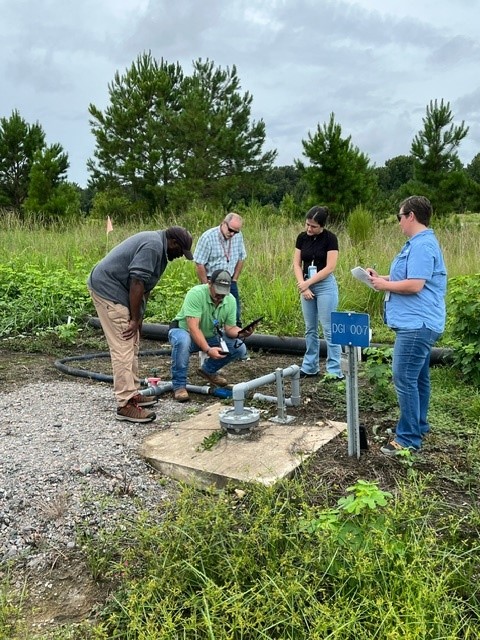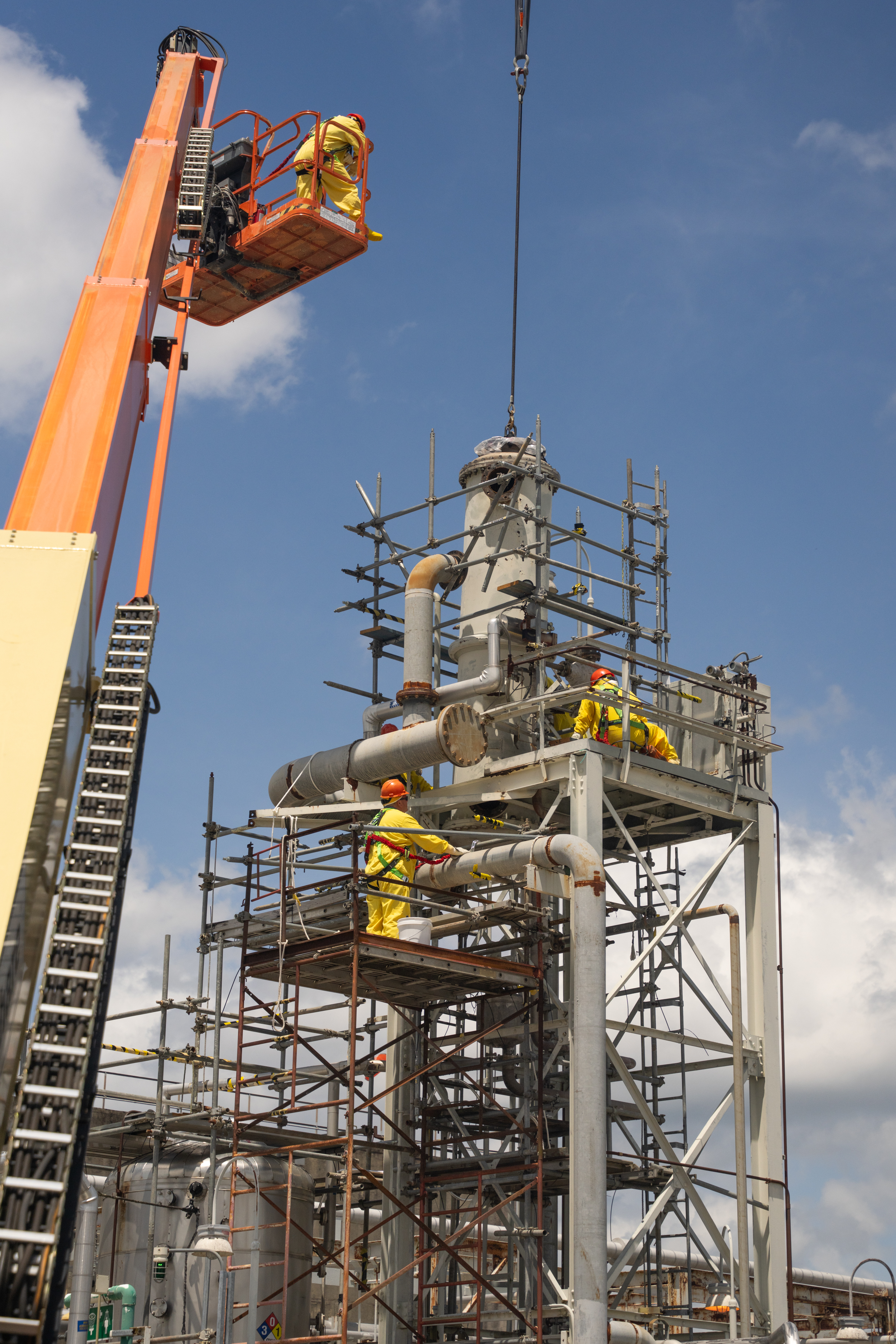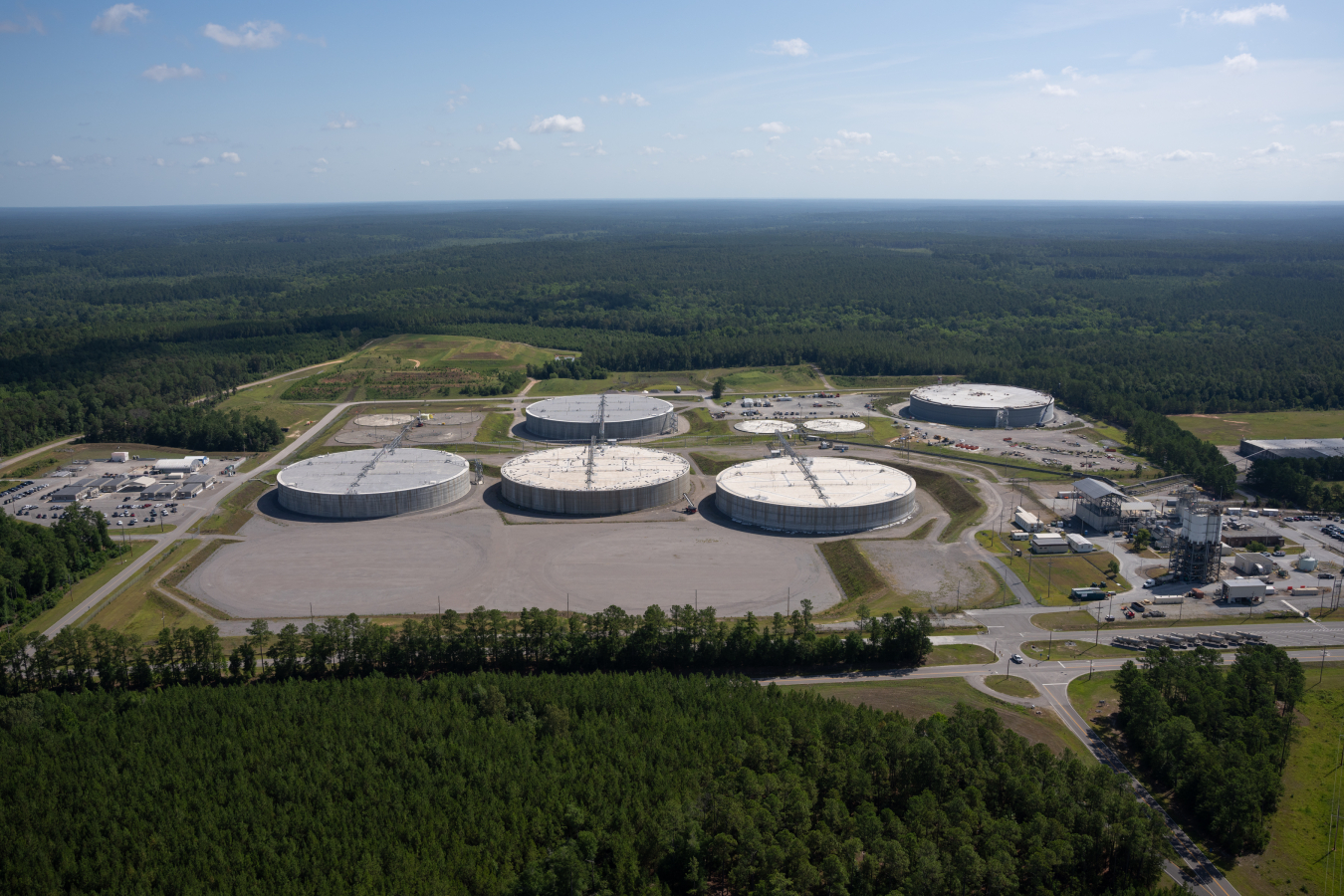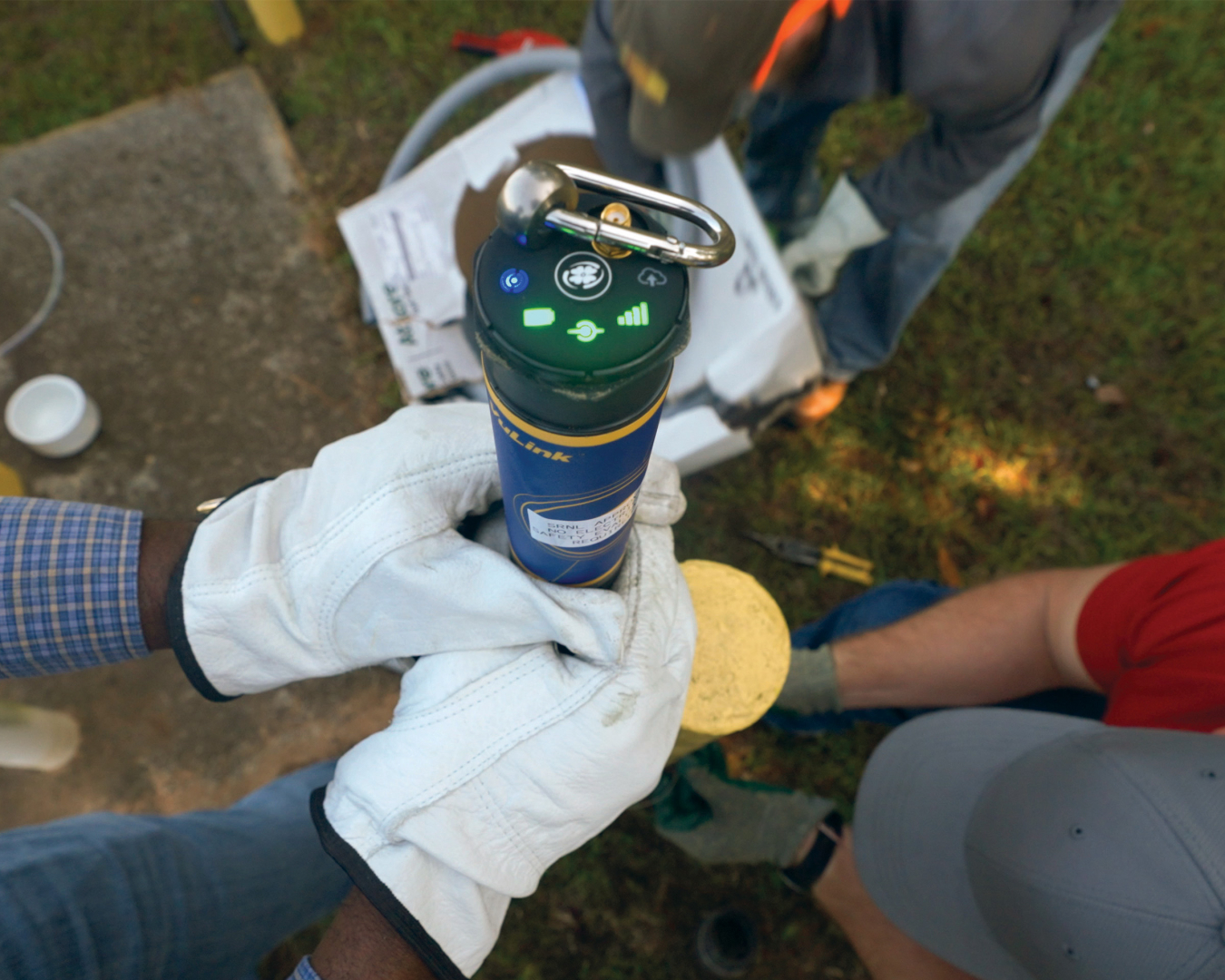Mike Budney, Manager, DOE-Savannah River Operations Office
“Over the past year, significant efforts with a steadfast focus on safety ensured a seamless EM-to-NNSA landlord transition at the Savannah River Site, a key EM priority. Despite management changes, the site’s commitment to environmental stewardship remains strong. Progress over the past year includes the successful completion of important initiatives like tank waste cleanup, nuclear materials management and nearing construction completion of the Advanced Manufacturing Collaborative in Aiken, South Carolina.”
Highlights
- Received authorization to operate Saltstone Disposal Unit (SDU) 9—an EM 2024 priority—and completed all major concrete placements for SDU 10.
- Achieved regulatory milestones designating tanks 9 and 10 waste removal completion, readying them for the next step in the closure process.
- Completed the first direct transfer of decontaminated waste from the Salt Waste Processing Facility to the Saltstone Production Facility.
- Processed more than 10 million gallons of liquid radioactive waste through the Salt Waste Processing Facility since operations began in October 2020.
- The Savannah River National Laboratory completed the installation of the roof and exterior walls to further progress construction of the Advanced Manufacturing Collaborative—an EM 2024 priority.
- Completed canister storage modifications in one of two glass waste storage buildings, effectively doubling storage capacity.
- Began the Fast Critical Assembly non-aluminum spent nuclear fuel dissolution mission.
- Completed the A-Area Groundwater Project.
- Completed 125 plutonium downblends (125 containers of plutonium oxide) in fiscal year 2024 for packaging into compliant containers for future disposal at the Waste Isolation Pilot Plant (WIPP).

SDU PROGRAM CONTINUES SUCCESS AT SRS
In April, EM authorized SDU 9 to begin operations, a priority for the cleanup program. The authorization marked the last step before SDU 9 begins to receive decontaminated material for disposal. The unit was completed approximately $60 million under budget and seven months ahead of schedule. In June, all major concrete placements, including 25 wall sections, 208 support columns and seven roof sections were completed for SDU 10. Achieving significant construction milestones, such as those for SDUs 9 and 10, is part of EM’s 10-year strategic vision for the cleanup program.
Right Caption: The D-Area Groundwater Treatability Study project team assesses artesian flow into an injection well onsite.
AHEAD OF SCHEDULE: TANKS 9 & 10
State and federal regulators concurred on completing Tanks 9 and 10 waste removal required to proceed to sampling and analysis. Tank 9 was the first tank to use drones in the annulus inspection process, providing more flexibility and capability and covering more area quicker than a magnetic crawler.
INNOVATING CLEANUP WITH ADVANCED MATERIALS MANAGEMENT
SRS safely executed and delivered on its 2024 operational commitments to nuclear material management, while safely maintaining five nuclear material facilities.
The Fast Critical Assembly mission began in the H-Canyon Chemical Separations Facility. Crews replaced a condenser in the General Purpose Evaporator critical for continued canyon operations.
Workers at K Area completed 125 plutonium downblends (125 containers of plutonium oxide), the most of any year to date, and made 35 shipments of transuranic waste to the WIPP for disposal. This process involves safely converting plutonium into a compliant form that meets WIPP disposal requirements, supporting efforts to reduce nuclear materials and their safe disposal. The K Area complex construction also progressed to support the National Nuclear Security Administration’s Surplus Plutonium Disposition project.
L-Area operators sampled C-Reactor heavy water moderator tanks for the first time since 1996 to support area completion projects. Characterization of the moderator allows for a disposition path to be determined. L-Area also completed the routine five-year 85T crane outage, returning it to service without impacting processing schedules.
The Solid Waste Management Facility managed low-level, mixed and transuranic waste inventories, receiving over 400 waste packages from both onsite and off-site partners. Twenty-four TRUPACT-II shipments of legacy and new generation transuranic waste were shipped to WIPP in fiscal year 2024.
Environmental remediation and area completion projects significantly reduced risks through groundwater remediation efforts, Building 235-F demolition activities and 772-F and 772-1F deactivation projects. Notably, the D-Area Groundwater Remediation System injected over 100 million gallons of artesian well water into the subsurface to remediate low pH and heavy metal contamination underneath a 33-acre former coal storage yard, while well development and pad installation activities were completed for the A-Area Groundwater Project.
For the 31st consecutive year, the Environmental Compliance and Area Completion Projects achieved all Federal Facility Agreement and Resource Conservation Recovery Act permit commitments and milestones on or ahead of schedule.

SAVANNAH RIVER NATIONAL LABORATORY ADVANCES TECHNOLOGY DEVELOPMENT FOR EM MISSION
Savannah River National Laboratory (SRNL) developed a comprehensive groundwater closure strategy, incorporating recommendations from the Environmental Management Advisory Board. This strategy leverages artificial intelligence and machine learning to enhance implementation approaches and advance groundwater cleanup efforts across the EM complex.
Right Caption: H-Canyon employees replace a 10,000-pound condenser in the General Purpose Evaporator, original to the 75-year-old facility
SRNL leads a multi-lab effort to provide Advanced Long-Term Environmental Monitoring Systems for the Department’s remediation efforts. Using an integrated network of sensors to monitor variables that control contaminant migration, SRNL uses artificial intelligence and machine learning to optimize monitoring and predict future migration.
At EM’s Moab site, SRNL supported the characterization of residual subsurface uranium and ammonium/ammonia sources using soil gas measurements to meet Groundwater Compliance Action Plan requirements.
At SRS, SRNL conducted testing for H-Canyon and tank farm spent fuel dissolving operations in support of the Accelerated Basin De-inventory program. These efforts aim to improve efficiencies and accelerate spent nuclear fuel disposition by reducing the number of high-level waste canisters produced.
EM awarded SRNL $11 million to support development of breakthrough technologies and approaches to accelerate the Hanford tank waste cleanup mission.
Construction advanced at the 60,000-square-foot Advanced Manufacturing Collaborative facility on the campus of the University of South Carolina, Aiken. Scheduled to open in mid-2025, this facility expands SRNL’s advanced manufacturing and workforce development by providing a modern, accessible R&D facility, bringing government, industry and academia together to advance manufacturing technology.



